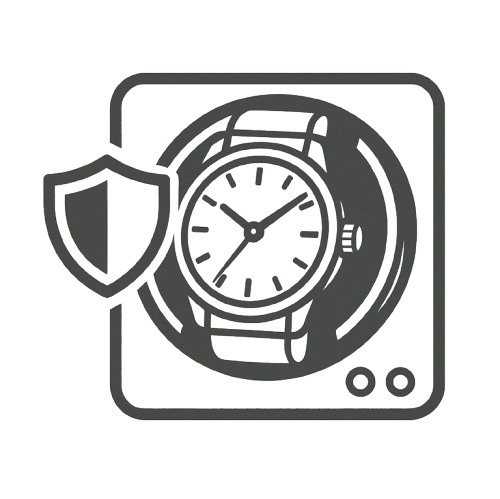Protective Design
Every watch winder is crafted with premium materials to shield your timepiece from dust, moisture, and scratches. Keep your investment safe and always ready to wear.
Precision Mechanics
Our winders feature advanced rotation settings to mimic natural wrist movement. Maintain your watch’s power reserve and accuracy without manual winding.
Stylish Display
From sleek carbon fiber finishes to luxury wood grain, our winders are designed to showcase your watch as a centerpiece, not just a tool. Beauty meets function.
What Is a Watch Winder

Purpose of a watch winder
The main function of a watch winder is to keep the watch running when it’s not being worn. Automatic movements rely on wrist motion to stay powered. Without regular use, they can stop, requiring you to reset the time, date, and other complications. A winder saves time and prevents wear from manually winding.
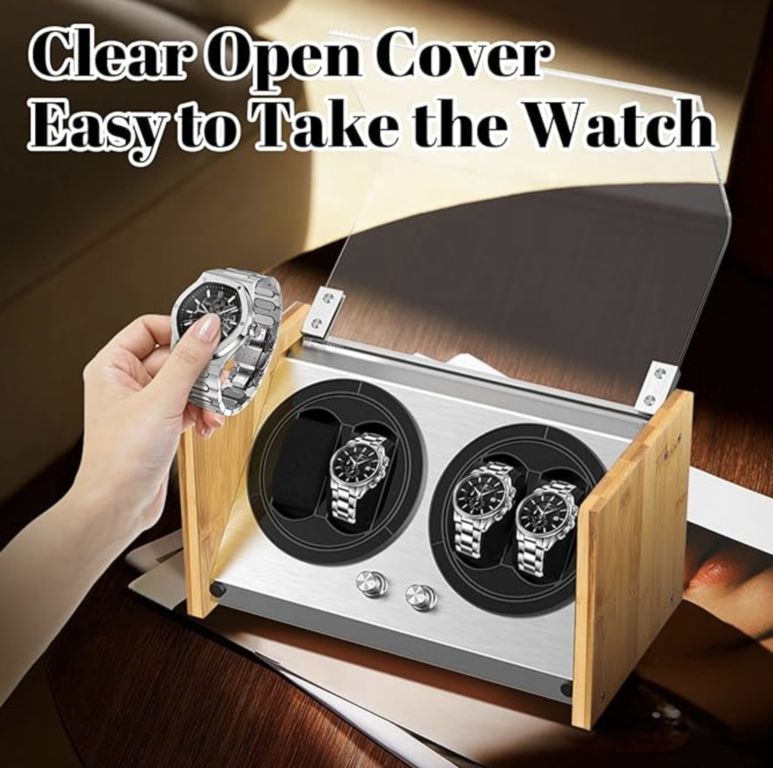
How it supports automatic watches
Automatic watches, including models from brands like Omega and Breitling, benefit from consistent motion. A watch winder replicates natural wrist movement, using adjustable rotation settings and optimal turns per day (TPD) to keep the movement active without overwinding. This helps maintain lubricants and protects the intricate mechanics.
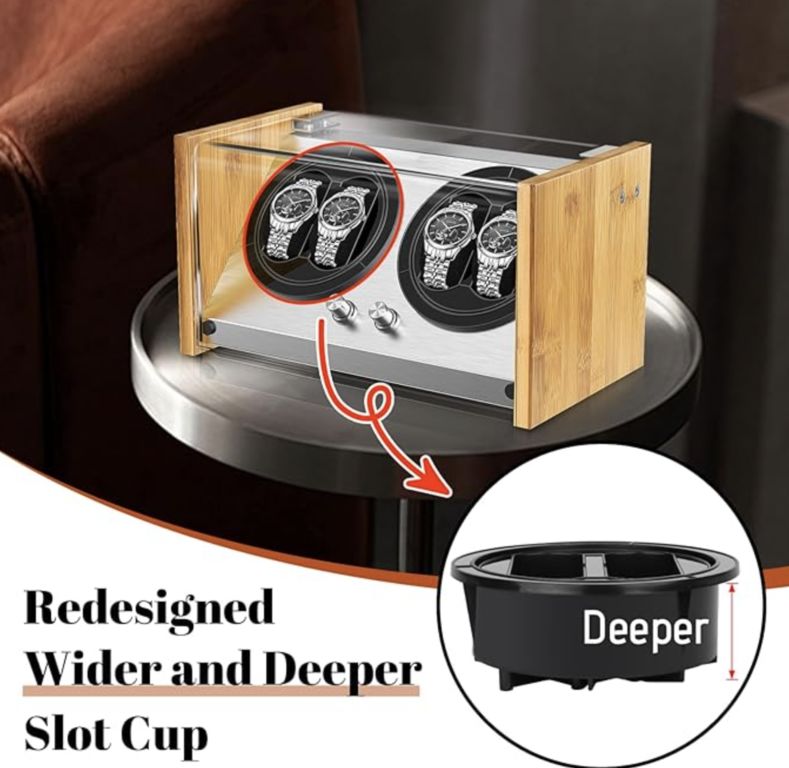
Who actually needs one
You may need a watch winder if you rotate between several automatic watches or don’t wear a specific piece daily. It’s especially useful for owners of complications like perpetual calendars or moon phases, where resetting can be tedious.

Common misconceptions
Some believe watch winders are designed only for collectors or are bad for watches — both are myths. When chosen correctly, they’re completely safe and enhance the ownership experience of any automatic watch.
How Watch Winders Work
Watch winders work by gently rotating your automatic timepiece to simulate the motion of a wrist. This keeps the internal mechanism active, ensuring the mainspring stays wound and the watch remains accurate — even when it’s off your wrist for days or weeks.
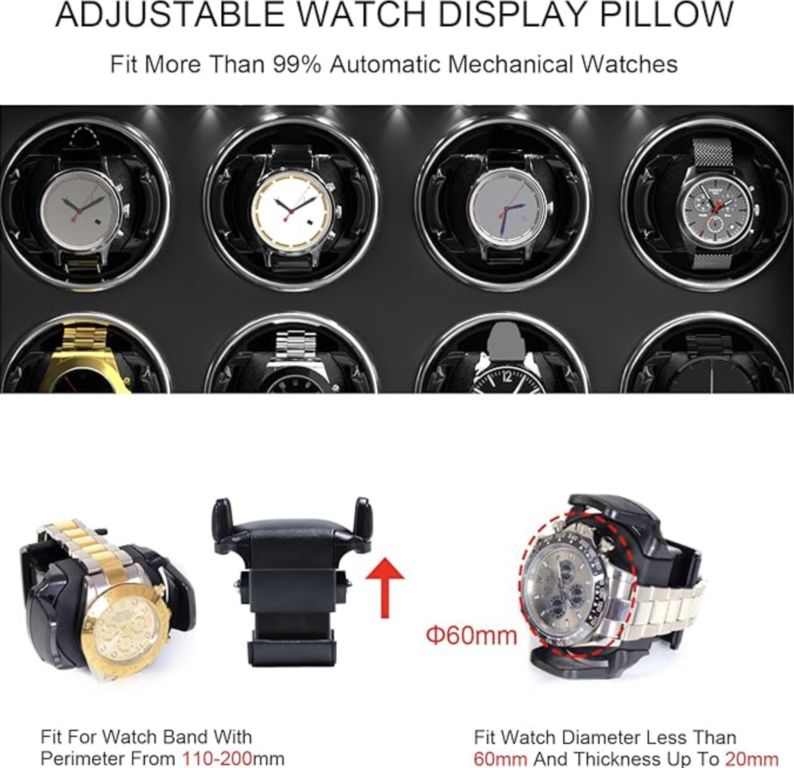
Internal mechanism
Inside every quality watch winder is a motor connected to a watch-holding platform. This platform turns in controlled intervals, guided by a programmed number of rotations per day. Higher-end models use Japanese motors for quieter, smoother performance, helping to preserve the delicate movement inside your automatic timepiece.

Directional rotation
To suit different watch models, winders offer settings for clockwise, counterclockwise, or bi-directional rotation. This matters because various movements require different winding directions to stay efficient. Advanced winders let you customize both the direction and the number of rotations per day, so your watch gets exactly what it needs — nothing more, nothing less.
Choosing the Right Turns Per Day (TPD)
When using a watch winder, one of the most important settings to understand is TPD — or turns per day. This number controls how many times your winder rotates your watch in a 24-hour period. Getting it right ensures your movement stays healthy, without unnecessary strain.
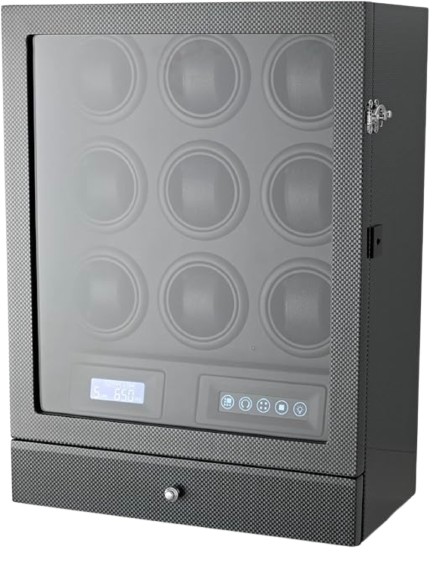
Why TPD matters for your automatic watch
Every automatic watch relies on a rotor to wind itself as your wrist moves. The TPD setting on a winder mimics this motion. Too few turns, and the watch stops. Too many, and you risk overwinding or stressing the movement — especially if you’re not using an adjustable model.
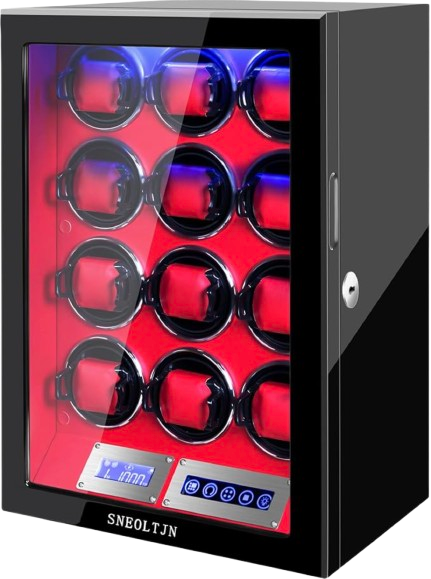
Ideal TPD ranges for popular models
Major brands like Rolex, Orbita, and Omega typically fall within a TPD range of 650 to 900. However, models vary — some need fewer rotations, others more. The watch model and its movement type determine the precise range, which is why many winders come with programmable settings.
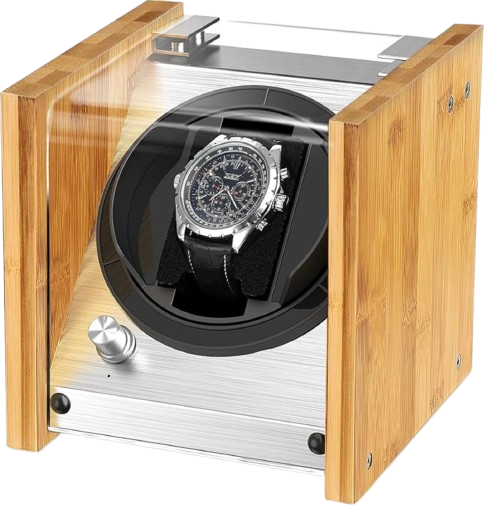
How many turns per day you actually need
You don’t need a high TPD to keep your watch running. For most watches, 600–800 TPD in the correct rotation direction (clockwise or bi-directional) is more than enough. Always consult your watch’s manual or a trusted source to find the recommended number.
Single Watch Winder vs. Multi-Winder Units
Whether you own one treasured automatic watch or a growing collection, choosing between a single watch winder and a multi-watch unit depends on your needs, habits, and space.

Pros and cons of a single watch winder
A single winder is ideal for those who rotate just one or two timepieces. It’s compact, cost-effective, and often fits neatly into existing watch storage like a watch box or drawer. For minimalists or those with a primary daily wear, it’s a smart, space-saving solution.
However, if you own two automatic watches or more, a single winder may fall short. You’ll either need to manually wind your other watches or invest in multiple winders — which can become cluttered and costly over time. In contrast, a double watch winder box or 4 watch winder offers elegant storage and consolidated power for multiple timepieces.
How To Buy & Use Watch Winders Properly
Best Watch Winder Storage Solutions
Many luxury watch winders now come built into watch boxes, offering both motion and protection in one streamlined unit. These combine cushioning, dust protection, and powered rotation in one design — ideal for those with limited storage space or a preference for neat, minimalist setups.
Want to show off your collection? Go with a watch winder to keep your timepieces on display. Clear front panels and LED light features add a luxurious, museum-like feel. Prefer discretion? Concealed options blend into cabinets or safes, offering subtlety without sacrificing performance.
Watch cases are great for passive storage, but they lack movement. A watch turner (winder) not only stores but keeps your watch running. If your priority is preserving function—not just form—a winder is the superior accessory for automatic watches.

Watch Winders for Automatic Watches
Not all watch winders for automatic watches are created equal. To keep your collection in optimal condition, you need a winder that matches your watches in both performance and precision. Choosing the right fit means understanding compatibility, build quality, and key functional features.
Compatibility and sizing
A good winder should securely fit your automatic watch, whether it’s a slim dress piece or a large sports model. Look for flexible watch cushions and adjustable holders that accommodate different sizes and shapes. Ensuring proper alignment also helps the winder keeps the internal mechanism safe during operation.
Motor quality and durability
A silent, long-lasting motor is the heart of any quality winder. Reputable brands often use Japanese motors, known for their reliability and quiet function — ideal for nightstands, safes, or bedroom use. Noise and vibration should be minimal to avoid disturbing the watch or the room.
Features that matter (timer, direction, etc.)
Look for smart features like programmable timers, customizable rotation direction (including clockwise and bi-directional), and precision number of rotations. These options ensure the winder matches your watch model’s needs, preventing overwinding and maintaining peak accuracy for your most valuable automatic timepiece.
Do You Really Need a Watch Winder?
You might be wondering — do you need a watch winder, or is it just a luxury accessory? The answer depends on how you wear and maintain your watches, especially if you own one or more automatic watches.
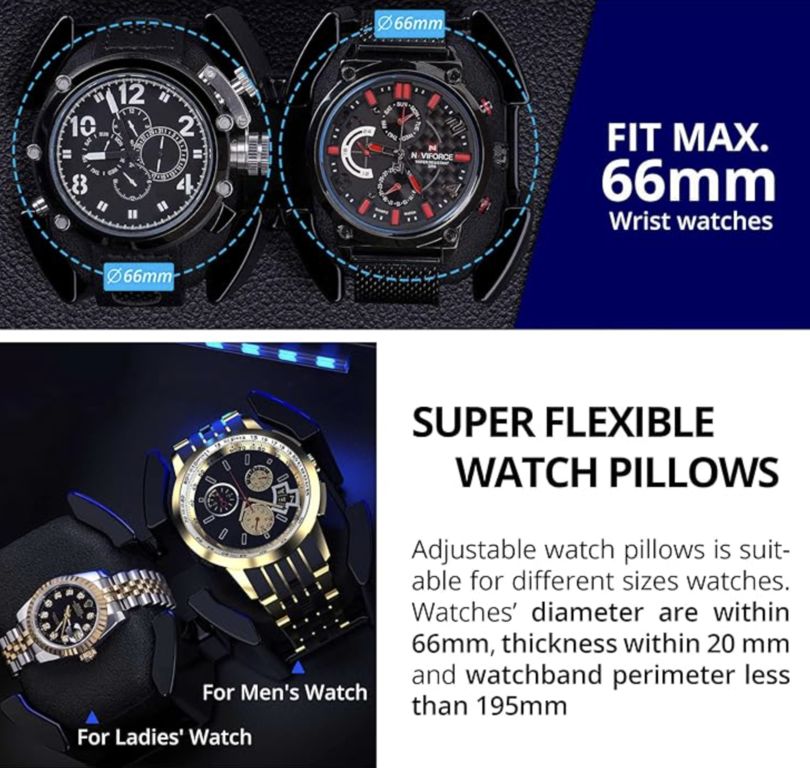
Scenarios where it’s essential
If you own several automatic watches and rotate between them, a winder can be a game-changer. It keeps each watch running, maintains time and complications, and eliminates the hassle of frequent resetting. It’s especially useful for pieces with complex functions, like perpetual calendars or moon phases, that are a pain to recalibrate.
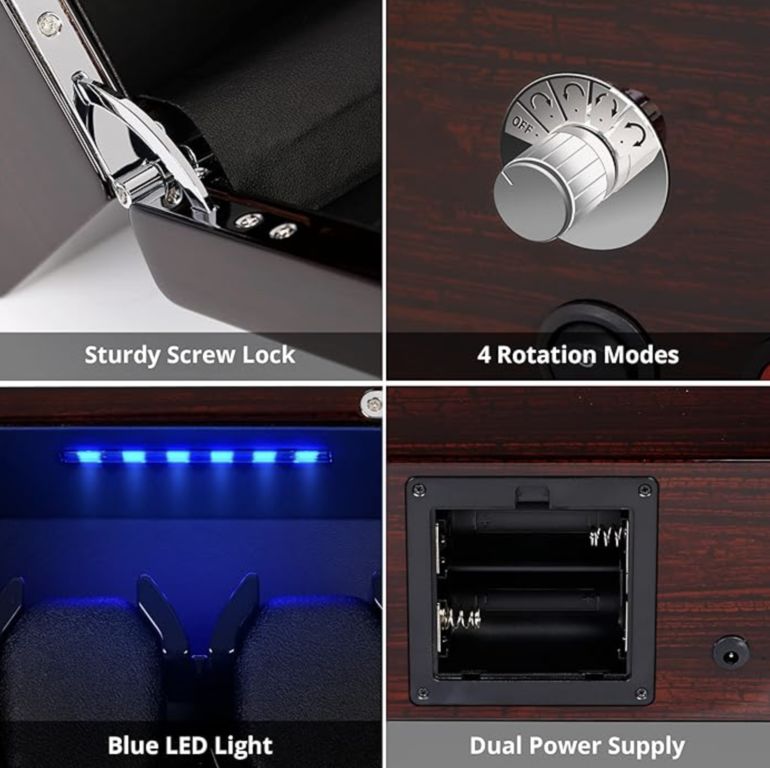
When it’s just a nice-to-have
If you wear the same automatic watch daily or enjoy the ritual of winding an idle piece, a winder may be less essential. In these cases, it’s more of a convenience — or a stylish way to display your watch — than a necessity.
Watch Winder Motors
The motor is the powerhouse of every watch winder — and its quality directly affects performance, longevity, and user experience. Choosing the right motor ensures your winder runs smoothly, quietly, and efficiently over time.

Japanese motor vs. others
Japanese motors are widely regarded as the gold standard for watch winders. Known for their ultra-quiet operation, energy efficiency, and reliability, they’re often found in premium units from trusted brands. Cheaper alternatives may use lower-grade motors that wear out faster, generate noise, or deliver uneven rotation.

Noise levels and energy use
A quality motor should be virtually silent, especially if the winder sits on your bedside table or in a shared space. Energy-efficient models reduce electricity use while still delivering the required number of rotations per day. In contrast, lower-end motors often produce audible humming and draw more power, compromising both comfort and sustainability.
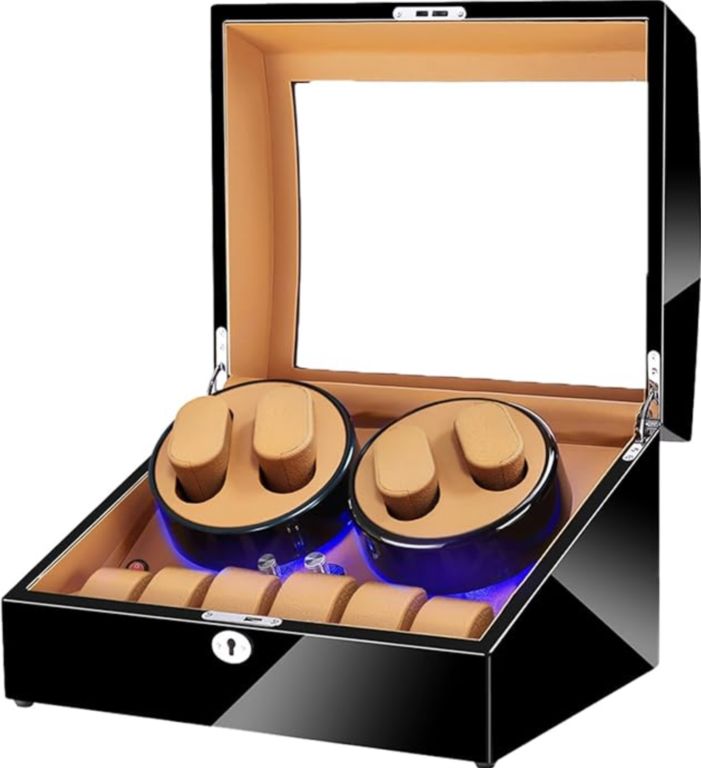
Expert Tips for First-Time Buyers
Buying your first watch winder can feel overwhelming — especially with so many options, price points, and features on the market. Here’s what seasoned watch enthusiasts recommend keeping in mind before you invest.
Budget vs. performance
While it’s tempting to go for the most affordable option, balance is key. A reliable automatic watch winder doesn’t have to break the bank, but extremely low-cost models often lack essential features like adjustable TPD, directional settings, or a stable watch holder. Invest in a unit that offers long-term value without unnecessary frills.
Avoiding cheap, damaging models
Poorly built winders can do more harm than good. Subpar motors, rough interior materials, or non-adjustable settings may put stress on your watch model’s movement. To protect your investment, avoid no-name brands and opt for trusted names like Wolf winder or Orbita, known for quality engineering and compatibility with luxury watches.
Our clients thought

A very good product. Motors can be programmed to turn CW, CCW or both, per watch. Also the turns-per-day can be programmed for each watch. Motors are very quiet, but not silent.
The blue light can be turned off.
Norman B
Customer

So far so good! VERY nice and able to customize winding for each watch. Beautiful case and love that the light comes on when you open the door. Watch holders are sturdy and adjustable. Doesn’t take up a lot of space like my previous winders and by far, my favorite. Highly recommend.
Jae S.
Customer

The Jins & Vico 8 Watch Winder arrived very well packaged in a triple box. Upon unpacking, I found the condition to be flawless, not even any dust from the packaging. The exterior is very well finished. The four feet on the bottom are a soft rubber material that are suitable for placing on a piece of furniture. The door, with the full length piano hinge is very solid, as well as the closing latch. The door closes with a very distinct latching sound. The latch includes a key and a limit switch to activate the light and stop the rotation upon opening the door, if you so program it.
Angus A
Customer
Final Thoughts and Recommendations
A watch winder not only adds elegance to your collection, but also plays a critical role in keeping your automatic watches including high-end models like Rolex or Omega in peak condition. Whether you own a single automatic or manage a growing collection of watch pieces, the right winder offers both protection and convenience. Prioritize quality, compatibility, and features that match your lifestyle. For those serious about preserving performance and presentation, investing in one of the best watch winders isn’t just smart — it’s essential.
FAQ
No — a quality watch winder keeps your timepiece in motion without overwinding. It preserves function and reduces the need for manual resets. Choose models with precise settings to support long-term care.
A winder gently mimics wrist movement through controlled watch winding cycles. It rotates your watch at set intervals, maintaining its power reserve and preventing it from stopping when not worn.
If you own 2 automatic watches or more and rotate them regularly, a winder can save time, maintain accuracy, and keep complications active. For one daily wearer, it’s optional.
Premium winders use high-quality motors, durable materials, and advanced settings like turns per day and direction control. You’re investing in longevity and protection for your watch.
Brands like Wolf, Orbita, and Swiss Kubik are trusted by watch lovers for craftsmanship, reliability, and precision. Look for brands offering strong warranties and proven performance.
No — when used correctly, a winder helps keep your automatic watch running smoothly. Just ensure settings match your watch’s requirements to avoid unnecessary strain.
